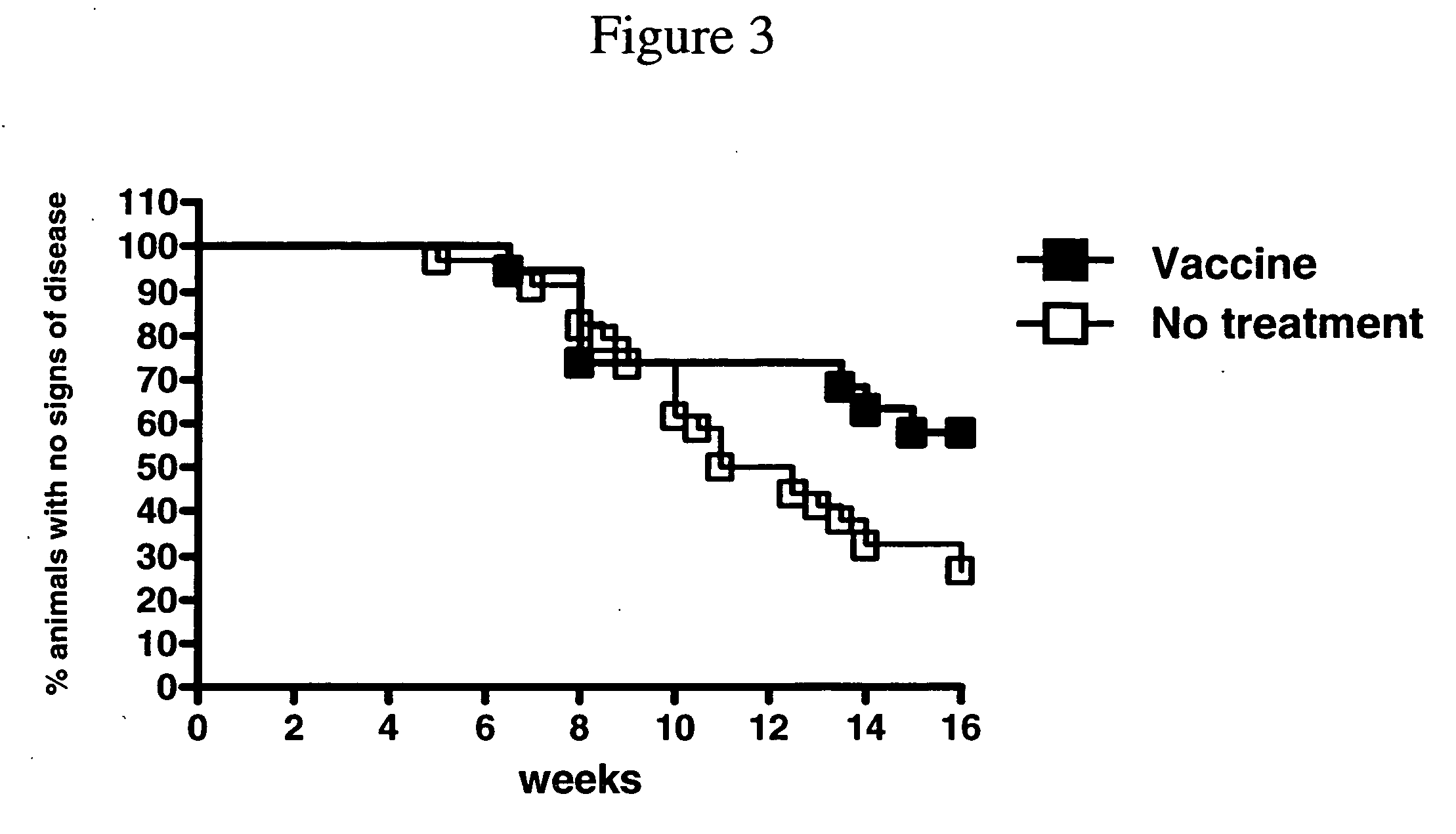Compositions and methods for cancer immunotherapy
a cancer immunotherapy and composition technology, applied in the field of compositions and methods for cancer immunotherapy, can solve the problems of insufficient response of protein, peptide and carbohydrate antigens, administered alone, and unable to confer immunity
- Summary
- Abstract
- Description
- Claims
- Application Information
AI Technical Summary
Benefits of technology
Problems solved by technology
Method used
Image
Examples
example 1
Intraperitoneal Administration of a TLR Agonist Enhances Therapeutic Efficacy of a Vaccine
[0161] To determine the effect of E6020 when administered intraperitoneally with a cancer vaccine, e.g., granulocyte-macrophage colony stimulating factor (GM-CSF) secreting tumor cells, a mouse model using melanoma cells was used. E6020 is a TLR4 (Toll-like receptor-4) agonist. B6 mice (C57BL / 6 mice) were engrafted subcutaneously with 1×106 syngeneic B16F10 murine melanoma cells. Three days after tumor cell inoculation, the mice were either (1) vaccinated subcutaneously (s.c.) with 1×106 B16F10 tumor cells that were genetically modified to stably express and secrete murine GM-CSF (B16-GM-CSF cells); (2) vaccinated intraperitoneally (i.p.) with E6020; or (3) were treated with a combination of s.c. GM-CSF cell vaccination and i.p. E6020 (the GM-CSF cell vaccination and E6020 vaccination were administered at separate sites in the mice). In these experiments, the GM-CSF cells were inactivated by g...
example 2
Local Administration of a TLR Agonist Enhances the Therapeutic Efficacy of a Cancer Vaccine
[0163] The effect of E6020 on treatment of B6 mice that were engrafted subcutaneously with 1×106 syngeneic B16F10 murine melanoma cells was examined. When tumors became palpable, the mice were injected intratumorally with GM-CSF cells alone, or in combination with E6020 (about 3-10 μg). Survival of the animals was monitored.
[0164] It was found that the population of animals treated intratumorally with a combination of GM-CSF cells and E6020 had increased survival compared to animals that were untreated or treated with GM-CSF cells alone (FIG. 2).
example 3
MUC-1 / E6020 Vaccine Therapeutic Effects
[0165] To test the effects of a MUC-1 vaccine with E6020 adjuvant for treating inflammatory bowel disease (IBD) and subsequent development of colon adenocarcinoma, an engineered mouse strain that lacks the IL-10 gene and expresses transgenic human MUC1 was used. Such mice spontaneously develop intestinal inflammation resembling IBD followed by colon adenocarcinoma. These data were presented and published in Beatty et al., AACR Annual Meeting 2006, Washington D.C., Apr. 4, 2006.
[0166] In these experiments, mice were immunized intranasally with 30 mg / nare of Tn MUC100mer (HGVTSAPDTRPAPGSTAPPA)×5, SEQ ID NO:1) and 3 mg of E6020. Animals were vaccinated at about 4.5 weeks and boosted at about 6.5 weeks and 9 weeks.
[0167] MUC IL-10− / − mice treated with vaccine and E6020 had delayed onset of IBD or did not develop IBD during the period of the experiment (FIG. 3). Mice treated with vaccine and E6020 had improved survival and did not develop colon c...
PUM
| Property | Measurement | Unit |
|---|---|---|
| Mass | aaaaa | aaaaa |
| Mass | aaaaa | aaaaa |
| Mass | aaaaa | aaaaa |
Abstract
Description
Claims
Application Information
 Login to View More
Login to View More - R&D
- Intellectual Property
- Life Sciences
- Materials
- Tech Scout
- Unparalleled Data Quality
- Higher Quality Content
- 60% Fewer Hallucinations
Browse by: Latest US Patents, China's latest patents, Technical Efficacy Thesaurus, Application Domain, Technology Topic, Popular Technical Reports.
© 2025 PatSnap. All rights reserved.Legal|Privacy policy|Modern Slavery Act Transparency Statement|Sitemap|About US| Contact US: help@patsnap.com



